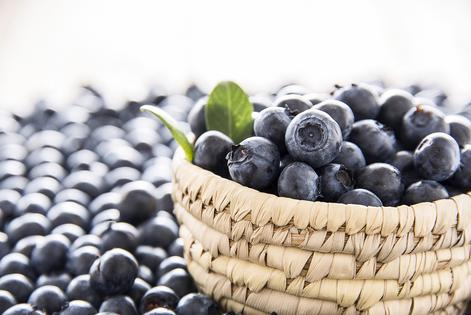Blueberries, a star among fruits
Published in Health & Fitness
Today, blueberries enjoy true star status as a favorite berry in the U.S. (second only to strawberries)
The folklore
Blueberries, one of the first named “superfoods,” are also one of the few fruits native to North America. Native American tribes have coveted them for hundreds of years, calling them “star berries” for the five-point “star” at the blossom end of the berry. The brilliantly hued berries were believed to protect children from famine, ease childbirth pain, and treat coughs and digestive issues. They were also a food staple, made into a jerky with meat, called sautauthig, which was eaten year-round. Also, they rank among the highest antioxidant foods.
The facts
Blueberries are part of the genus Vaccinium, along with cranberries and lingonberries. There are nearly 150 varieties of blueberries, categorized into three groups: high bush — the most commonly cultivated, rabbiteye, and lowbush (or wild blueberries). Deep blue to purple/black, blueberries range in girth from a quarter inch to one inch in diameter. Wild berries tend to be tarter, while cultivated are sweeter. Bursting with nutrition, just one cup packs 36% DV (Daily Value, based on 2,000 calories/day) of heart-healthy vitamin K, 24% of antioxidant vitamin C, and a powerful punch of health-protecting phytochemicals (plant compounds), like antioxidant anthocyanins, which give blueberries their beautiful color.
The findings
Blueberries have been associated with several health benefits, including reduced risk of cardiovascular disease (CVD), Type 2 diabetes, and death, as well as improved weight management and cognitive protection. According to a review of studies published in Advanced Nutrition (2020), regular consumption of about one-third cup of blueberries per day can lower risk of diseases and the most prevalent health conditions. Researchers found that eating one cup of blueberries a day reduced risk of CVD between 12% and 15% (The American Journal of Clinical Nutrition, 2019).
The finer points
Smooth, plump and cloaked in rich color, fresh blueberries are best from May through October. Look for firm, dry berries that are dark purple to blue-black, not reddish, as those aren’t fully ripe. The silvery coating (the “bloom”) indicates freshness. Keep them refrigerated and eat them within 10 days. Blueberries can be frozen, dried, pureed, and canned. Toss into salads, whole grain cereals, yogurts, or smoothies; bake them in flaky scones or quick breads; or go savory and mix them into a turkey burger adorned with blueberry ketchup!
(Reprinted with permission from Environmental Nutrition, a monthly publication of Belvoir Media Group, LLC. 800-829-5384. www.EnvironmentalNutrition.com.)
©2021 Belvoir Media Group. Distributed by Tribune Content Agency, LLC.







Comments